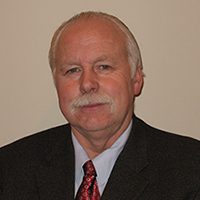Make-up air is essential for balanced ventilation

By Norm Grusnick, PEng, Sales Manager, ECCO Supply
Exhaust fans cannot work properly without an adequate supply of air. If provision for the supply air is not made, the vacuum created by the exhaust fans reduces the effectiveness of mechanical ventilation. Negative pressure also causes excessive air infiltration, making it difficult to heat a large facility properly.
These conditions can be corrected by replacing the exhausted air with clean, fresh, preheated air. The primary purpose of this make-up air is to temper outside air and supply it in sufficient quantity to bring about a balance in ventilation.
Often, depending on the quantity of make-up air in relation to the exhaust, the heating system will shut down during the working day, allowing the make-up air to handle the entire heating load. The heating system then functions only to maintain satisfactory temperatures at night and in other critical times.
When you add an air make-up system to an existing plant, it is necessary to analyze the entire building. Where exhaust fans already exist, the installation of air make-up usually will not increase the heating load and can bring about a reduction of overall heating costs. This may be understood by considering that infiltrated air, warmed at least partially by an existing heating system, is ultimately mixed with room air and exhausted through the ventilation fans.
Infiltration of unheated air results in a decline in heating efficiency. Most heating systems are not adequately rated to cope with infiltration when appreciable negative pressures exist.
Air make-up units provide a systematic method of heating entering air and supplying it in a controlled quantity. With proper balance of supply and exhaust, infiltration is eliminated. By properly tempering supply air, the heating system is relieved of this abnormal load. The results are uniform space heating, effective ventilation, comfort, and economy.
Heating With Fresh Air
Experience with fresh air heating systems has shown that it is practical and economically sound to heat larger warehouses and industrial plants with fresh air. The question is whether to use 100% outside air or re-circulate some portion. Both methods are used by design engineers.
When direct-fired gas systems were first used, some authorities felt that positive exhaust was necessary to assure a balance and prevent building up products of combustion. It is now generally recognized that air can be supplied into most buildings having a balance with a supply and exhaust system.
The standard air make-up unit used for large space heating can either be 100% outside air or with fixed percentages of re-circulation or a combination of both. Equipment suppliers can assist in determining your application requirements.
Gas-fired air make-up units are available in various sizes and types, including direct or indirect fired configurations. The equipment is designed for tempering outside air and supplying it to the building for ventilation make-up and balancing of negative pressures.
Temperature Controls
Two standard systems for temperature control are available, offering a choice of functions for regulating air temperature.
The outlet temperature central system only senses the unit’s discharge air temperature. The sensor is in the airstream, and it averages the temperature and sends back a signal to the regulator.
In most applications, it will be desirable to use room temperature control. Two types of controllers are available for this operation.
The simplest and least expensive is a thermostat located in an appropriate location. When the area calls for heat, the make-up air unit delivers air at a higher temperature until the thermostat is satisfied.
The other method is modulating room temperature control. The sensor actuates a modulating regulator to provide an incremental increase or decrease of the discharge temperature, which provides closer control and more even temperature control.
Assistance in selecting the appropriate make-up air and ventilation systems is available from local equipment suppliers. ■



